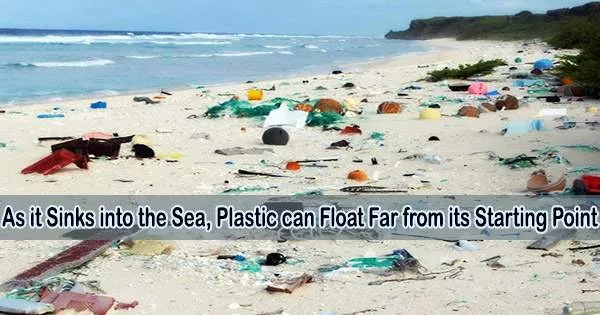Plastic waste that has been discarded or is drifting in the ocean can build up on the water’s surface and create floating islands of trash. Researchers believe a sizeable quantity also sinks, despite the fact that it’s tougher to detect.
In a recent study published in the journal Environmental Science & Technology of the American Chemical Society, one team utilized computer modeling to examine the distance that pieces of light plastic travel when they fall into the Mediterranean Sea. Their findings imply that these particles are capable of deeper underwater drift than previously believed.
From old shopping bags to water bottles, plastic pollution is besieging the oceans. This trash is not only unattractive, but animals may get entangled in it or mistake it for food. Plastic garbage also has the potential to produce organic contaminants if it is left in the water.
The issue can be seen most clearly at the surface, where currents can collect this debris into sizable “garbage patches.” But plastic trash also tends to accumulate considerably further below.
Even objects that weigh less than water can sink as a result of other processes, like the adhesion of algae and other creatures. At least half a mile below the surface, pieces of this thin plastic, which are typically 5 millimeters or less in size, have been discovered.
Researchers don’t fully understand how plastic sinks, but they typically presume that it descends directly from the surface. However, Alberto Baudena and his colleagues suspected this light plastic might not follow such a direct route.
They put this presumption to the test by using considerable data already gathered on floating plastic pollution in the Mediterranean Sea and using a sophisticated computer model designed to track plastic at sea.
Then, they traced virtually 7.7 million plastic pieces to depths of up to about half a mile by simulating their distribution across the ocean. According to their findings, the parts that sank more slowly were carried away from their points of origin by currents a greater distance, on average moving 175 miles laterally.
Despite the dearth of underwater plastic distribution observations, the team discovered that their simulations matched those reported in the Mediterranean. Additionally, their simulations indicated that only around 20% of the pollution near coasts comes from the closest countries and that currents may drive plastic into coastal locations.
According to the researchers, this plastic has a larger potential to interact with and harm marine life because of the lengthy trips of these particles.
















